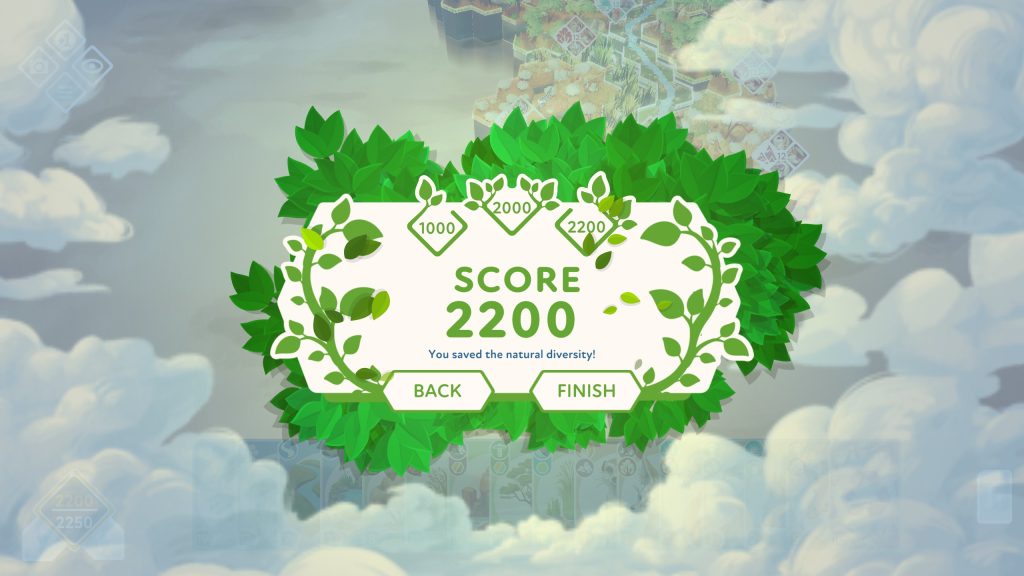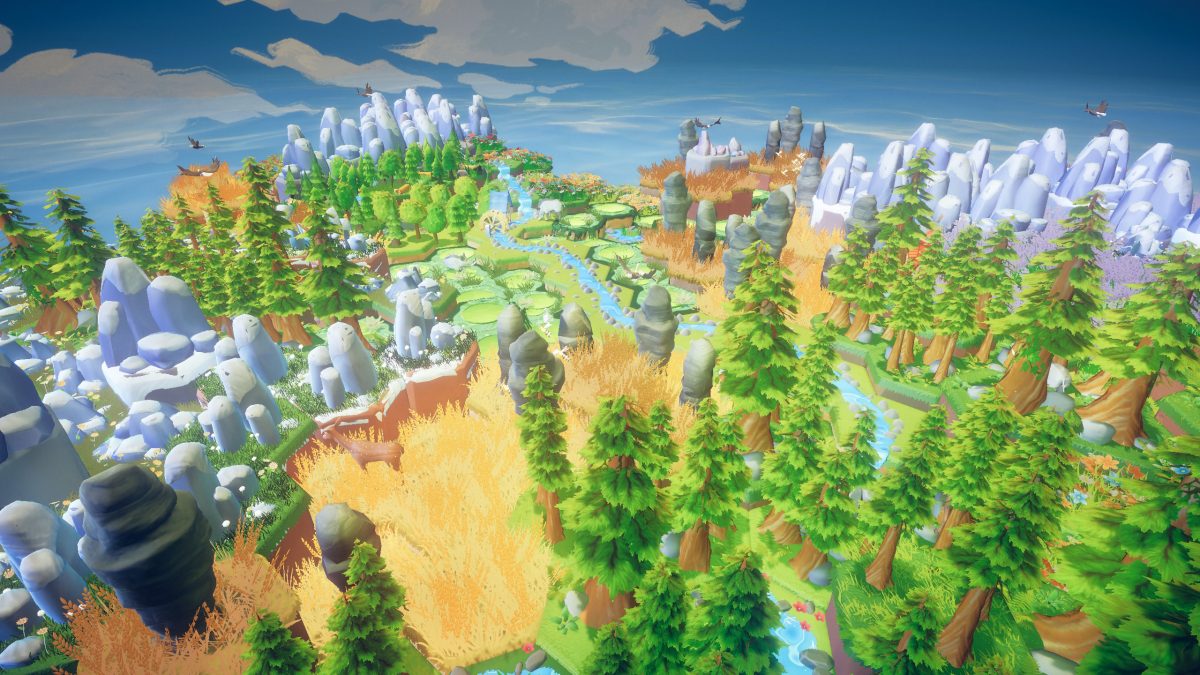Looking for the Quick Review?
A good puzzle game is a parasite. A slightly-too-long Tetris binge should have you laying awake in bed, interpreting everything in your environment and nascent dreams as a series of four-panel blocks requiring strategic reorientation. A few hours with Portal should bend your linear interpretation of the local geometry, at least for an hour or so.
Preserve took my understanding of the world and its biodiversity and shattered it into little hexagon-shaped pieces. Before Preserve, my comprehension of animal habitats was that they’re complex, interwoven fabrics of varying size and composition. One animal’s habitat blends with another’s, sometimes seamlessly, other times along lines of great contention. Some creatures prowl large expanses of forest or plain, while others content themselves to the westernmost branches of a specific tree or the underside of one of two particularly cold rocks.
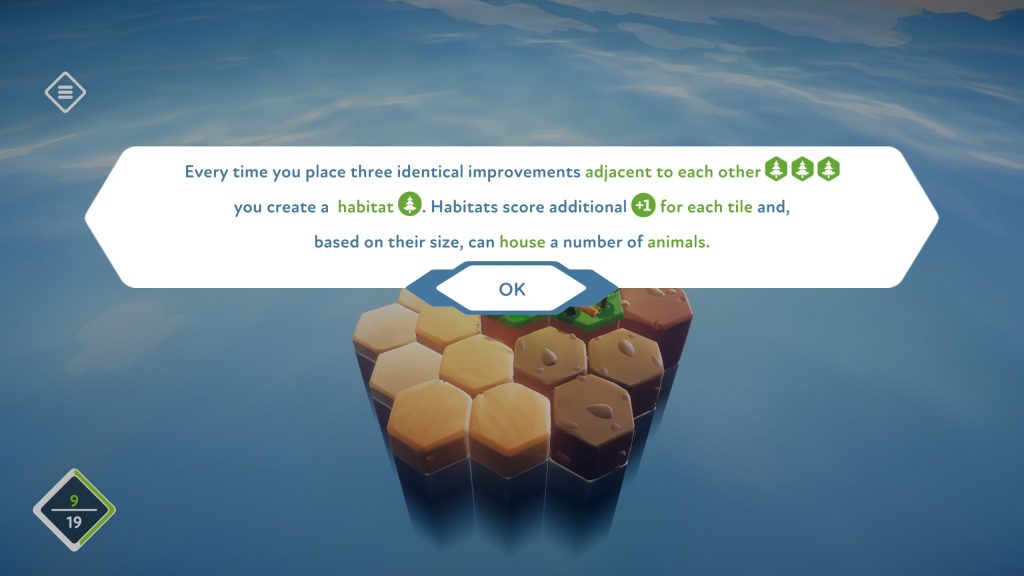
This was my understanding, at least, until Preserve taught me better. In actuality, it lectured, each animal habitat is a grid of impeccably-defined hexagons, almost always optimally twelve hexagons, preferably placed along some source of freshwater, though this is more necessary for points than anything else. Habitats are fine when populated by one animal, but they’re best when occupied by exactly three, the range of each overlapping perfectly, with predators and prey alike living in complete harmony.
Having endeavored to read absolutely nothing about animal biology or environmental science since my stint with Preserve, I assume everything it taught me is completely accurate, and I’ll be modifying my understanding of nature accordingly going forward.
But I’ve made peace with this, because Preserve is a worthy brainworm of a game. There’s something equally relaxing and challenging about setting out to paint habitats across the grid of hexagons afforded by the game in a Dorfromantik style, with map expansions, habitat tiles, and animal cards divvied out each time the player completes a milestone.
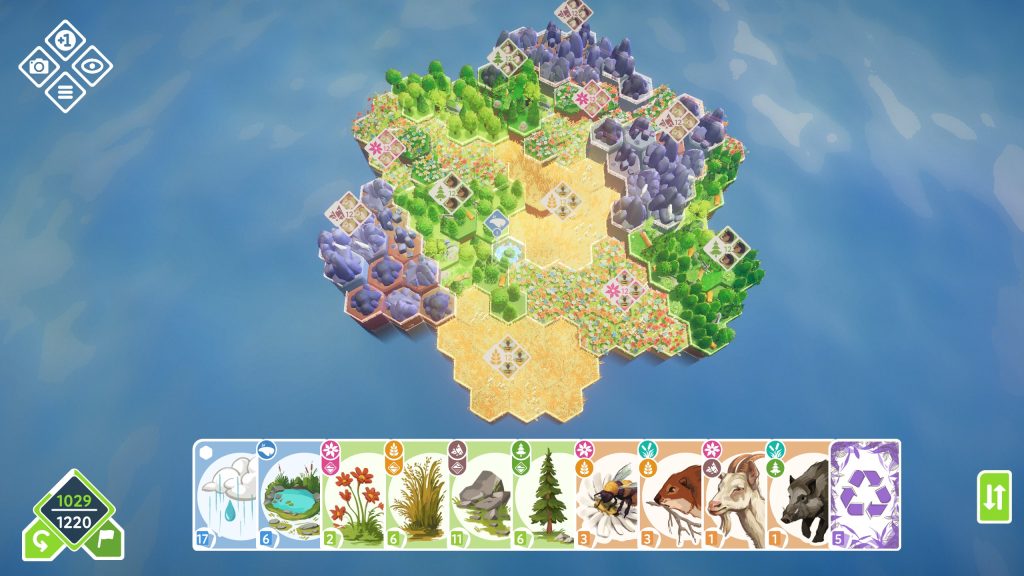
Preserve is a game of gradual expansion and resource management, making the most of the tiles and cards the game gives you while remaining cognizant that each point milestone reached will afford you a new hand of resources that you’ll have to manage alongside those you’ve already placed. Planning is essential, made opaque by the lack of knowledge as to what cards and tiles will come up next. Hedging bets with every tile placed is essential.
The game is, ultimately, forgiving. Levels are relatively easy to beat assuming adherence to the mechanics introduced in each, but additional challenges and achievements invite a great deal more strategy and forethought.
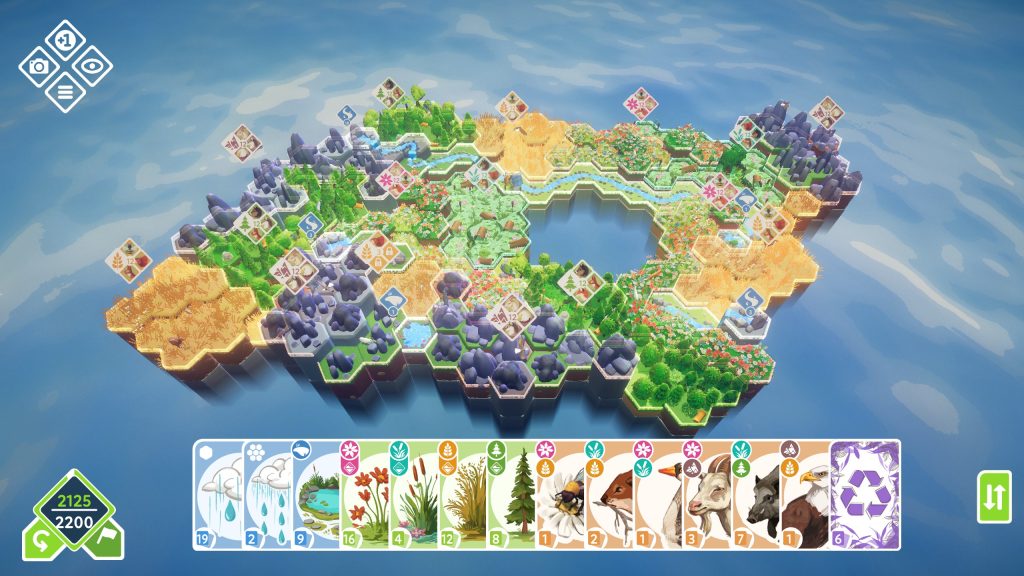
The mechanics of Preserve make it a good puzzle game, but what gives them character is the game’s vibrant art and scene-setting music. Painting each grid of twelve hexagons on the world feels like establishing a new biome, watching the trees press up against bold, stone mountains, seeing tremendous Jurassic flower forests bloom along the shores of a coral sea.
These factors combine to form that parasite that lives still in my mind, burrowed somewhere deep between my neural gyri. Preserve is the sort of game I want to play when I wake up between bites of breakfast and before I lay down for bed at night, the sort of “just a few turns” puzzle game that stays inviting for just the right amount of time.
As I near the end of my quest to greedily claim each of the game’s achievements (attainable by even the less-ardent achievement hunters), I find myself hoping that the new content promised by the game’s level selection screen is near on the horizon. This is a beautiful game and, so far, one of my favorites this year.
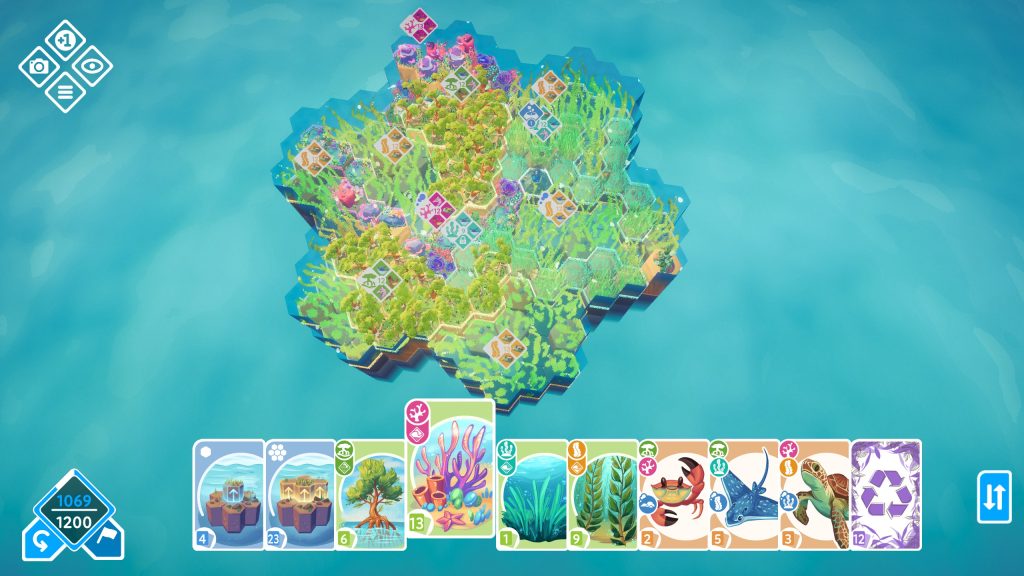
Quick Review
Game: Preserve
Developer: Bitmap Galaxy
Published by: Grindstone
Available for: Nintendo Switch/Switch 2, Playstation 5, Xbox Series, Windows PC, Mac OSX
CONTENT
Microtransactions: None
Tedium: None
Violence: None
Content: Optimistic predator-prey cohabitation
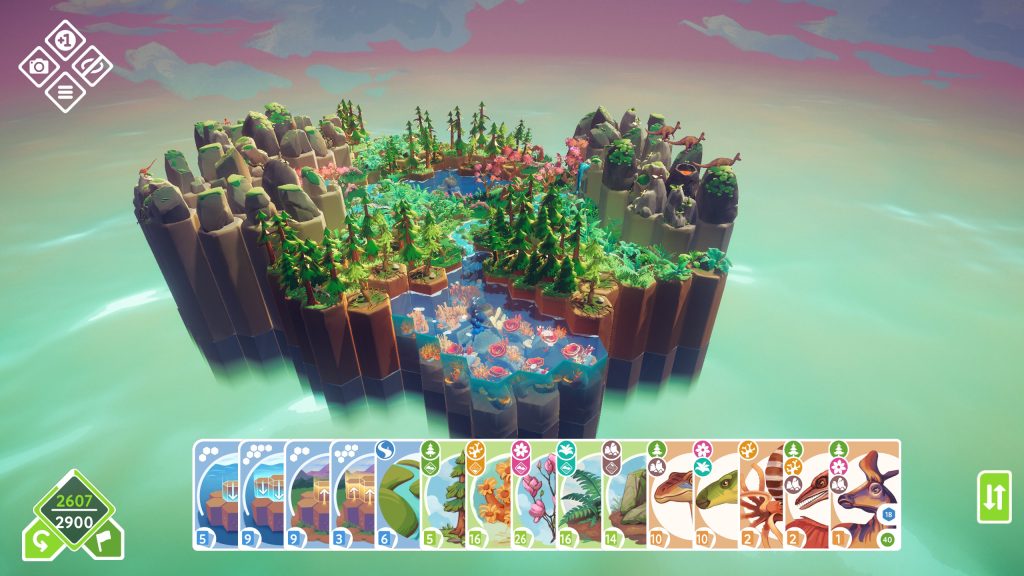
FEATURES
- Single-player
- Top-down puzzler
- Refreshing deck placement
- Cozy playstyle
- Nature theme
WHAT I LIKED
- Art style – From the depictions of animals and biomes on in-game playing cards to the ecosystems they create when placed on empty land, Preserve‘s art is gorgeous and inviting throughout.
- Puzzle design – Preserve‘s core loop, using what cards you’ve been dealt to sculpt habitats that earn the most points, is fun, challenging, and never overstays its welcome. The game introduces mechanics, challenges, and goals at a pace that never overwhelms the player but keeps things from feeling stale.
- Level of challenge – I didn’t play a single level in Preserve that frustrated me enough to consider revoking the title’s “cozy game” status; the random nature of card dealing the game relies on creates a level of strategic fuzziness that some may find unfair, but it’s never so intense or poorly-applied that it alone was responsible for the fumbling of a run. The scoring criteria required to pass a level set a low bar, and while the standards for earning each level’s prestigious three-star rating are harder to meet and require a fair extra bit of strategy, I never found that additional mental investment worthy of causing stress or real frustration. It helps that the game’s inviting nature made each failure an opportunity to continue playing.
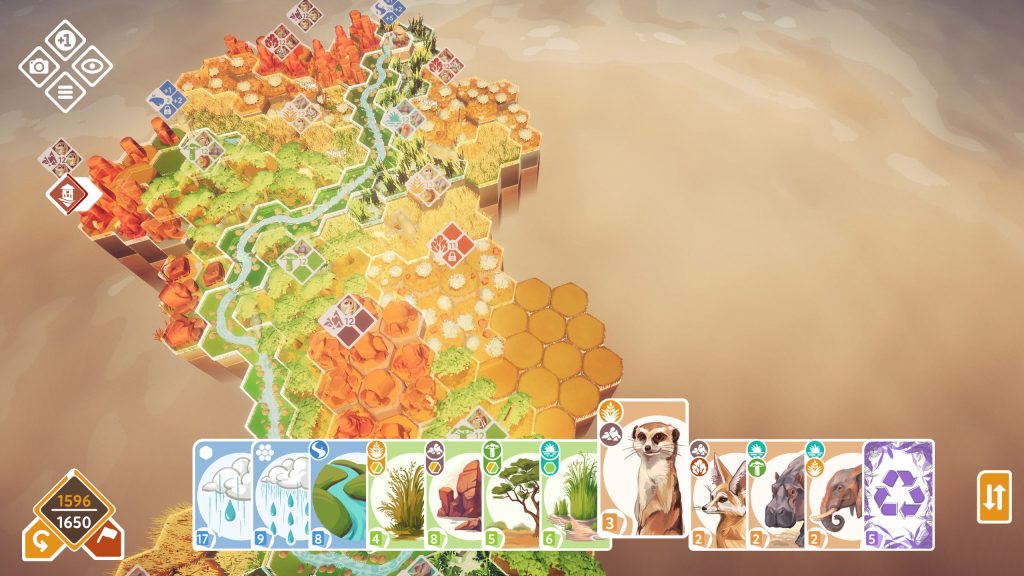
CONCERNS
- Some unintuitive scoring – While Preserve does a good job of laying out the numerical values awarded by certain actions in its score card, many of the game’s levels introduce new, level-dependent mechanics that affect scoring significantly. The score outcomes of these mechanics are listed alongside the other actions in the score card, but it may take playing the level to completion once before the mechanic is easily understood. For example, having unlocked the “wonders” mechanic in the game’s Continental levels (which allows the player to upgrade individual habitats by using “wonder” cards on them), I made the mistake of assuming that the equivalent wonder system in the Savanna levels would work similarly (in these levels, wonders are physical objects that take up space). Because I’d assumed they’d work similarly to the previously-introduced wonders, I’d prepared my tiles improperly. Given the game’s limited single undo option, I had to play the level again in order to plan my map with an adequate understanding of the mechanic.
- What you see is what you get – I really enjoyed Preserve and struggle to delineate more major concerns that might turn players off. If you’re on the fence, I’d try the game’s demo out.
WHO’S IT FOR?
If you’re a fan of puzzle games with a cozy tilt whose required challenge is limited but challenge ceiling somewhat higher and you find the idea of sculpting animal habitats and mixing and matching the animals therein enticing, Preserve is for you.
If you’re not a fan of puzzle games or if you prefer your puzzles a little more intense and demanding, Preserve might not be the right fit.
If you’re still on the fence about Preserve, I’d try the game’s demo out. If you enjoy it, you’ll likely enjoy the full game. If the demo doesn’t quite do it for you, it’s unlikely the complete experience will have you feeling much different.
